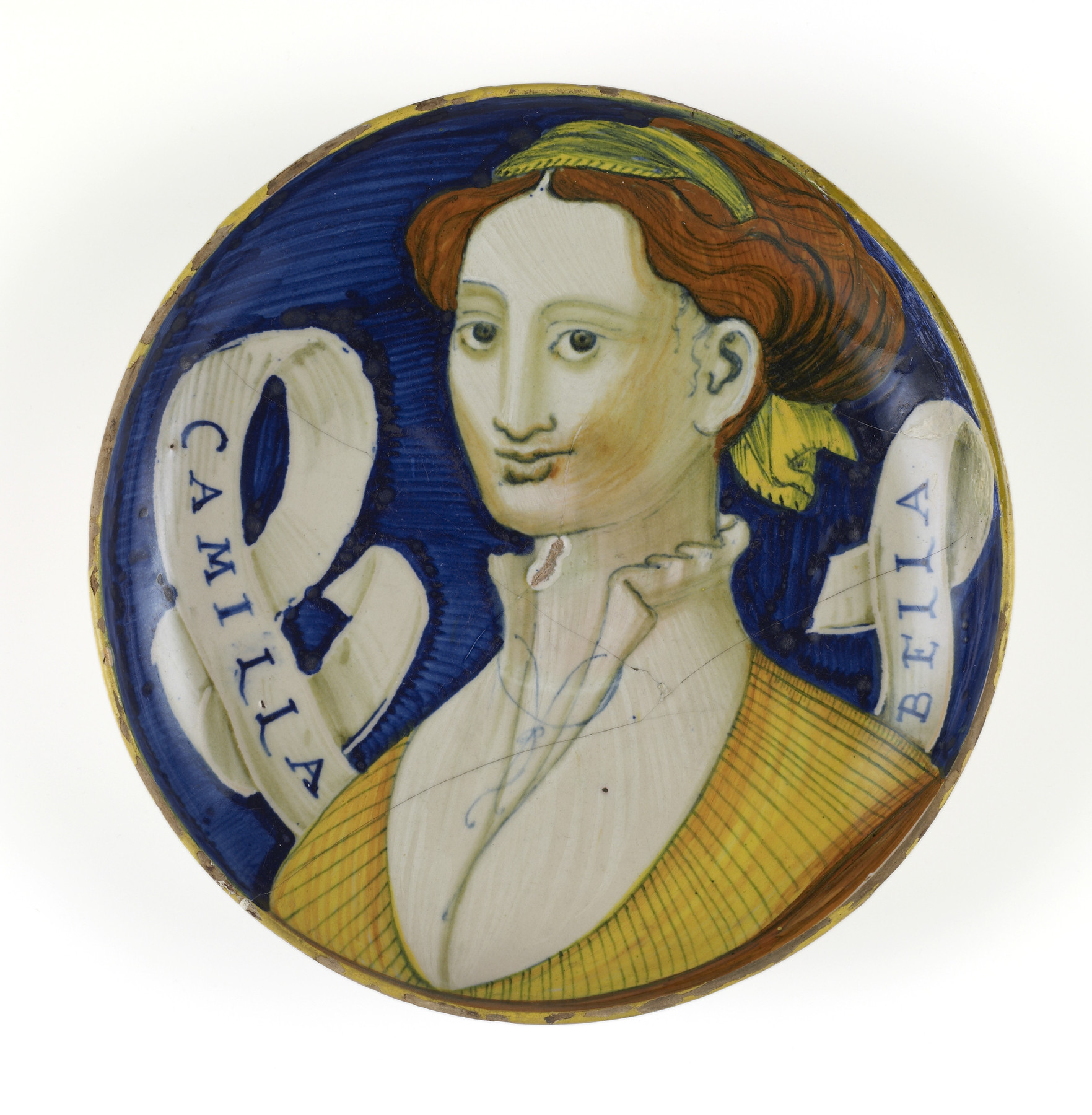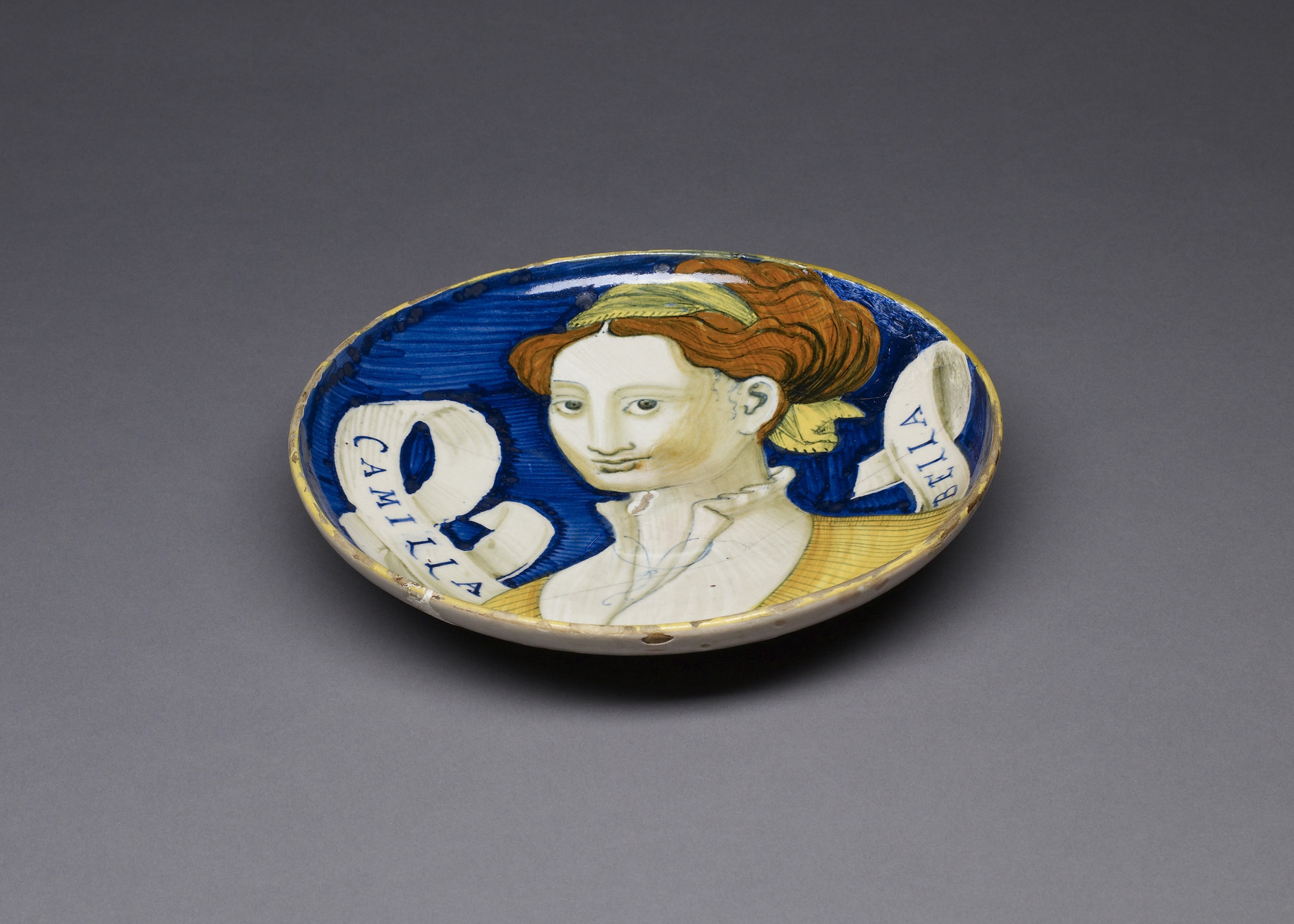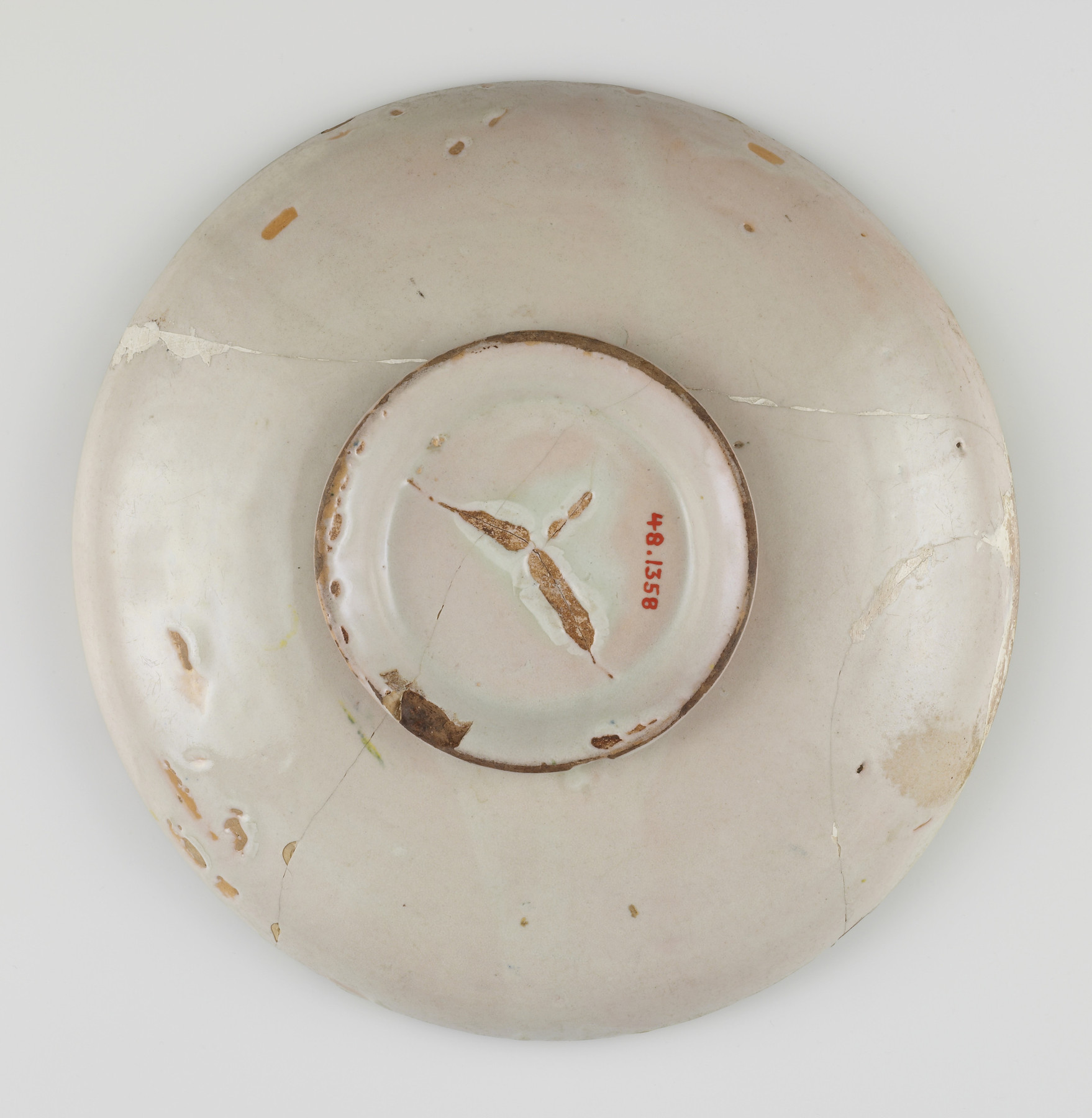Dish with the "Beautiful Camilla"
(Renaissance Europe )
Represented in three-quarter profile, this depiction of a young woman does not appear to have the idiosyncrasies of an actual portrait but is rather an idealized image of a “Belle Donne” (beautiful woman), a woman painted according to Renaissance ideals of female beauty. Behind her, a scroll is inscribed with the phrase, “Camilla Bella,” meaning “Beautiful Camilla.” This dish is characteristic of Renaissance “coppe amatorie” (love dishes), that often included an idealized picture of a woman with her name, followed by the word “bella” (beautiful). This dish may have been presented to a lady named Camilla, from her male admirer, or the woman and the inscription could allude to a literary figure, such as Camilla from the Roman poet Virgil’s (70-15 BCE) “Aeneid.” Dishes decorated with busts of beautiful women were extremely popular in the early sixteenth century, and were produced in great quantities in Deruta and Urbino. The back of this dish is painted bluish-white. For similar dishes, see 48.1351 and 48.1741; for more information on ‘maiolica’ in general, see 48.1336.
Inscription
Provenance
Provenance (from the French provenir, 'to come from/forth') is the chronology of the ownership, custody, or location of a historical object. Learn more about provenance at the Walters.
Henry Walters, Baltimore [date and mode of acquisition unknown]; Walters Art Museum, 1931, by bequest.
Exhibitions
| 2021-2022 | Majolica Mania. The Bard Graduate Center, New York; The Walters Art Museum, Baltimore. |
Geographies
Italy, Urbania (Casteldurante)
(Place of Origin)
Italy, Urbino (Place of Origin)
Measurements
H: 1 3/4 × W: 9 1/2 in. (4.5 × 24.2 cm)
Credit Line
Acquired by Henry Walters
Location in Museum
Accession Number
In libraries, galleries, museums, and archives, an accession number is a unique identifier assigned to each object in the collection.
In libraries, galleries, museums, and archives, an accession number is a unique identifier assigned to each object in the collection.
48.1358








